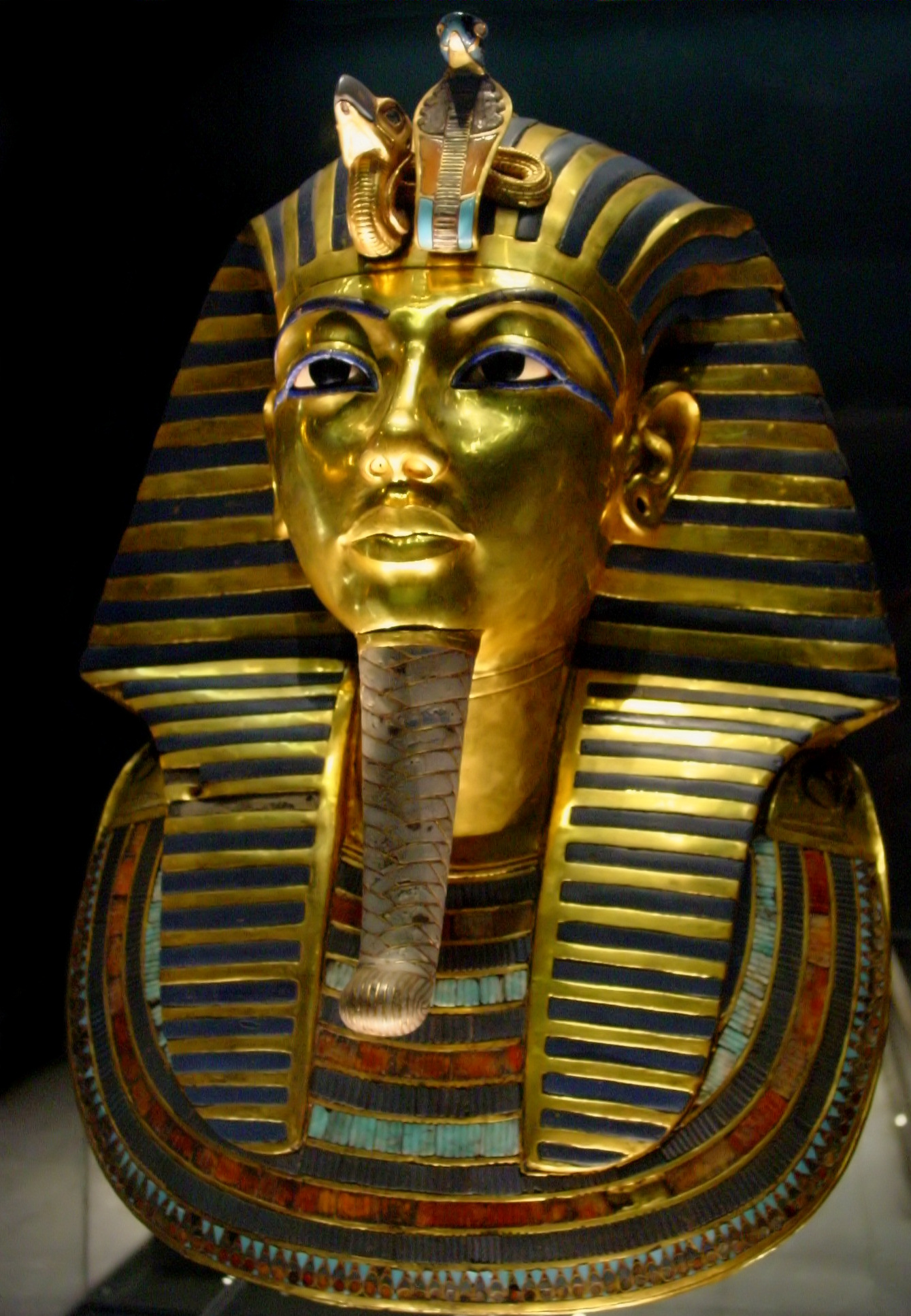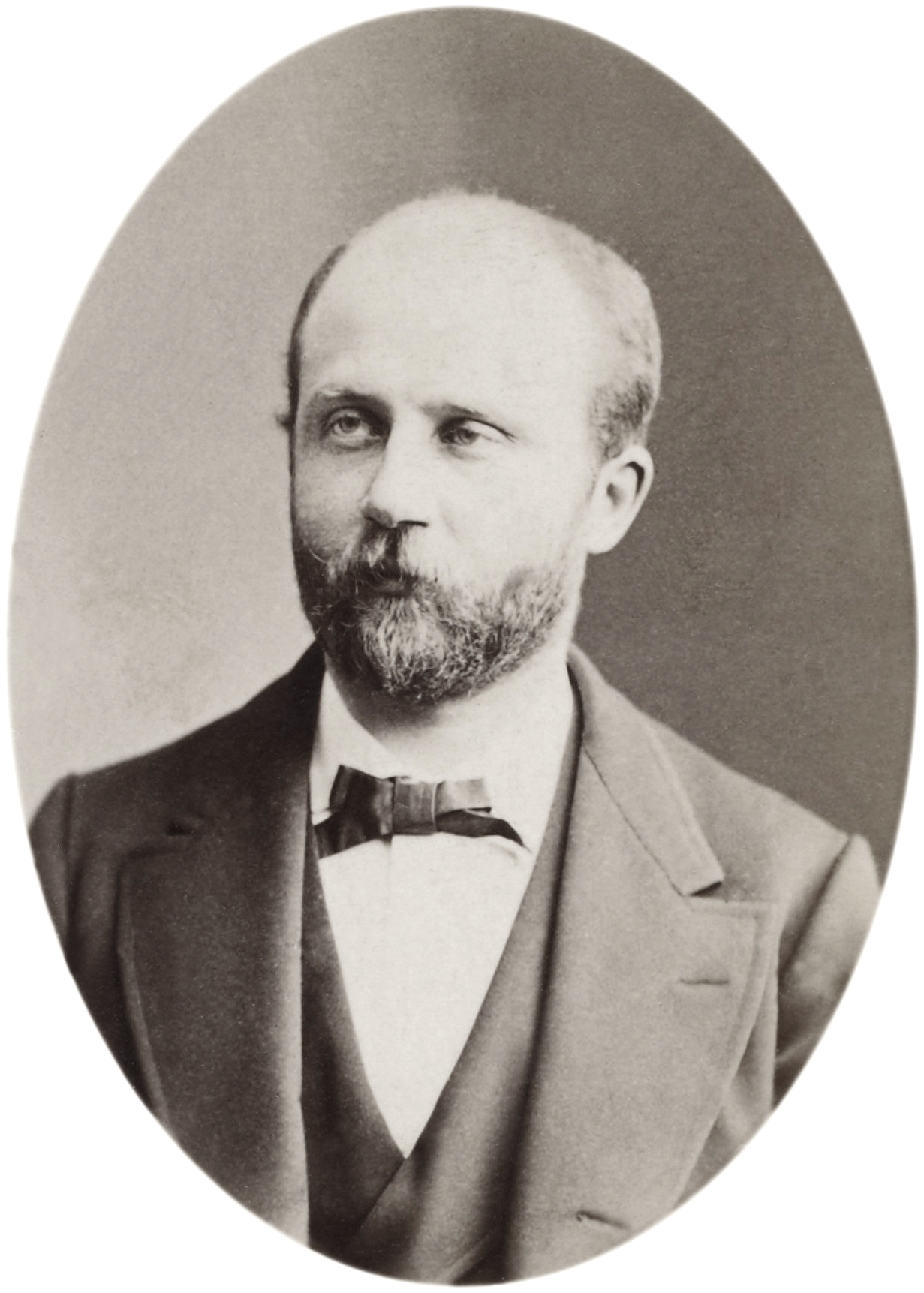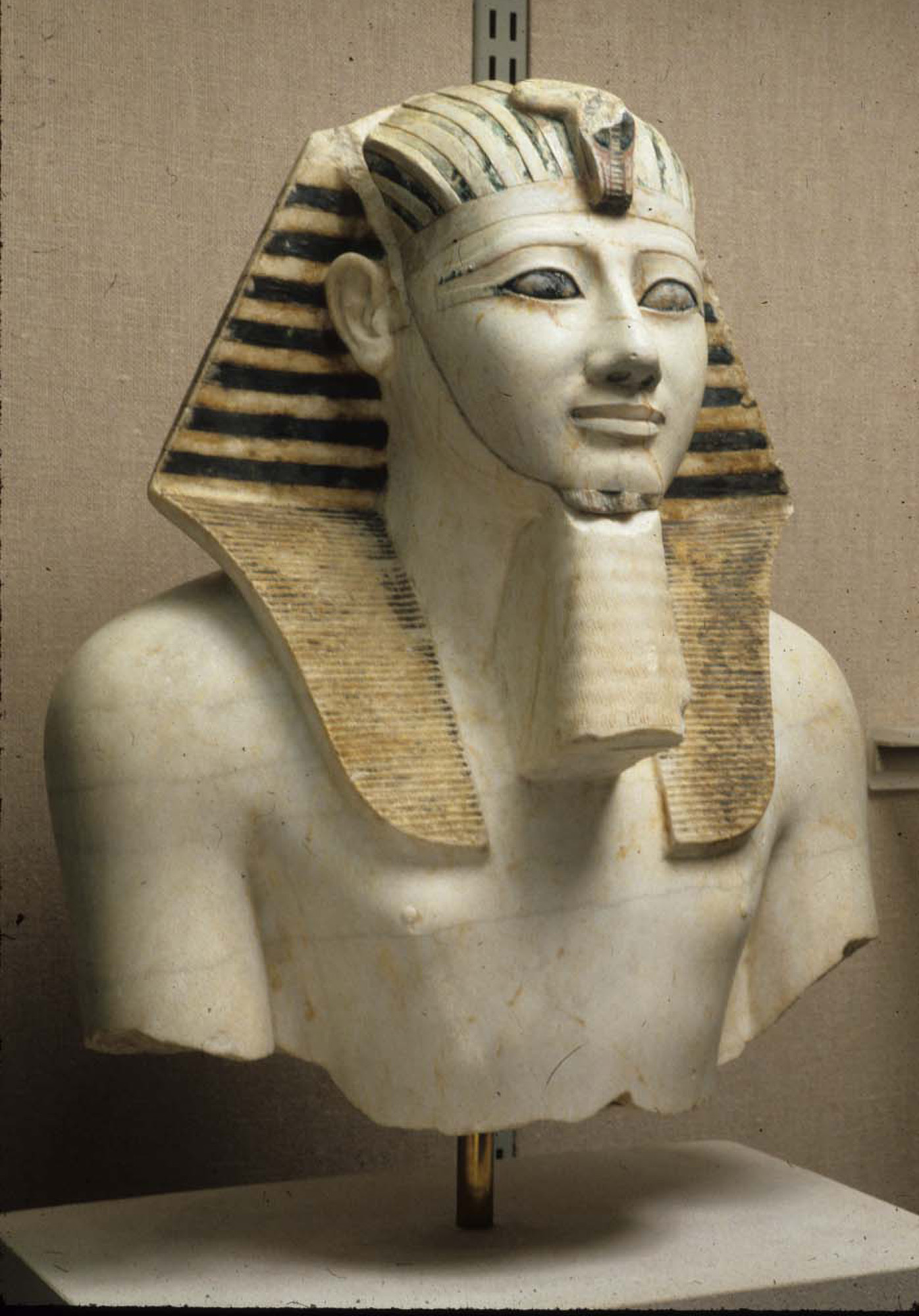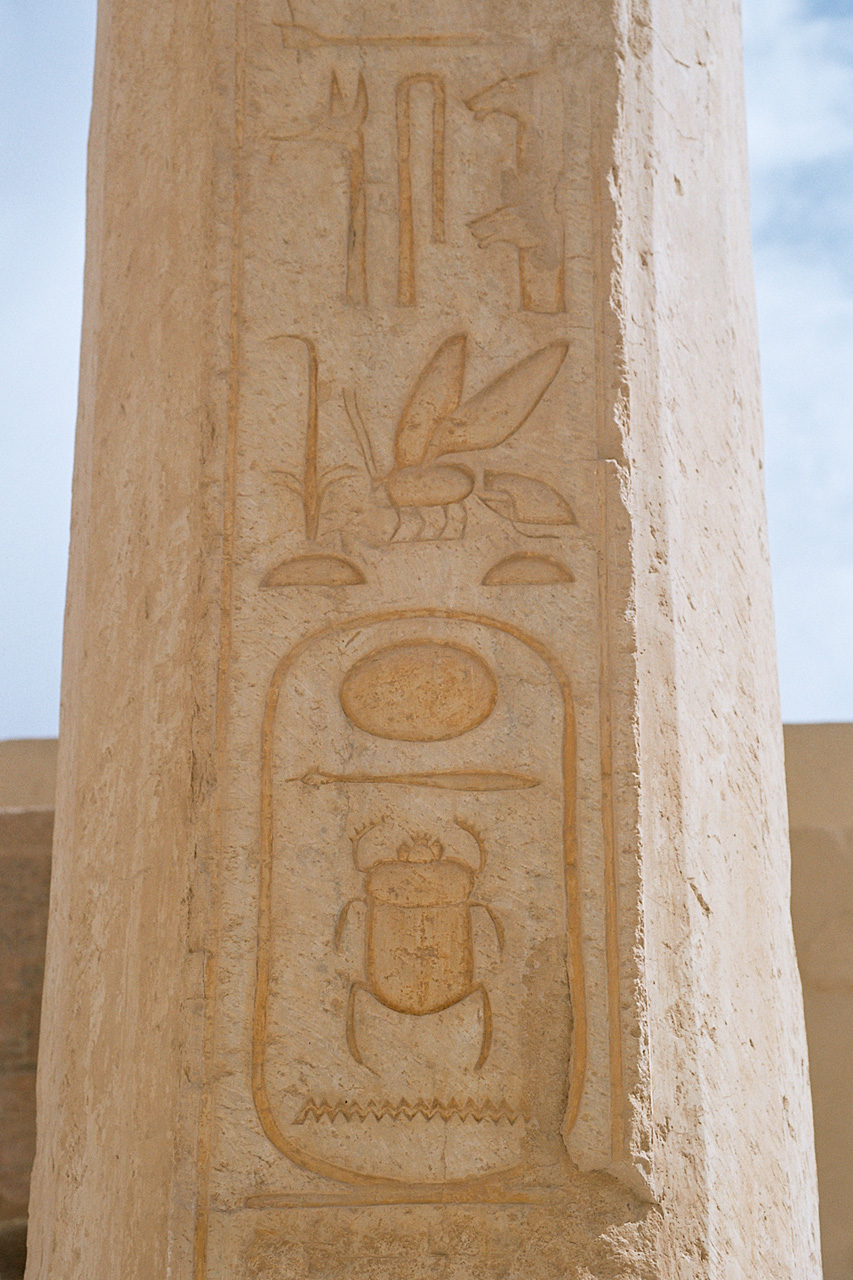|
Djedptahiufankh
Djedptahiufankh (c. 969 – c. 935 BCE) served as Second Prophet of Amun and Third Prophet of Amun during the reign of Shoshenq I of the 22nd Dynasty. Family and career Djedptahiufankh is only known from his burial and mummy. He held the title of District Governor as well as "King's Son of Ramesses" and "King's Son of the Lord of the Two Lands". The latter may suggest that he was related to the royal family of possibly the 21st Dynasty or 22nd Dynasty. It has been conjectured that Djedptahiufankh was the husband of Nesitanebetashru (A) (who was a daughter of Pinedjem II and Neskhons). This theory is based purely on the fact that Djedptahiufankh was buried next to Nesitanebetashru in DB320. Death and burial He died around the middle of Shoshenq I's reign according to inscriptions found written on the bandages of his mummy and coffin. He was buried in Deir El-Bahari Tomb 320 or DB320, which actually served as the family tomb of the 21st Dynasty High Priest of Amun Pinedjem I. DB320 ... [...More Info...] [...Related Items...] OR: [Wikipedia] [Google] [Baidu] |
DB320
The Royal Cache, technically known as TT320 (previously referred to as DB320), is an Ancient Egyptian tomb located next to Deir el-Bahri, in the Theban Necropolis, opposite the modern city of Luxor. It contains an extraordinary collection of mummified remains and funeral equipment of more than 50 kings, queens, and other royal family members of the New Kingdom, as it was used as a cache for royal mummies during the Twenty-first Dynasty.Dylan Bickerstaffe''The Royal Cache Revisited'' JACF 10 (2006), 9–25 The eleven pharaohs found there include 1 of the 9 pharaohs from the 17th dynasty, 5 of the 15 pharaohs from the 18th dynasty, 3 of the 8 pharaohs from the 19th dynasty, and 2 of the 10 pharaohs from the 20th dynasty. The tomb was originally used as last resting place of High Priest of Amun Pinedjem II, his wife Nesikhons, and other close family members. Its discovery by locals in 1871, and by Egyptologists in 1881, caused a sensation. The mummies quickly became a highlight of ... [...More Info...] [...Related Items...] OR: [Wikipedia] [Google] [Baidu] |
Shoshenq I
Hedjkheperre Setepenre Shoshenq I (Egyptian ''ššnq''; reigned c. 943–922 BC)—also known as Shashank or Sheshonk or Sheshonq Ifor discussion of the spelling, see Shoshenq—was a pharaoh of ancient Egypt and the founder of the Twenty-second Dynasty of Egypt. Of Meshwesh ancestry, Shoshenq I was the son of Nimlot A, Great Chief of the Ma, and his wife Tentshepeh A, a daughter of a Great Chief of the Ma herself. He is presumed to be the Shishak mentioned in the Hebrew Bible, and his exploits are carved on the Bubastite Portal at Karnak. Chronology The conventional dates for his reign, as established by Kenneth Kitchen, are 945–924 BC but his time-line has recently been revised upwards by a few years to 943–922 BC, since he may well have lived for up to two to three years after his successful campaign in Canaan, conventionally dated to 925 BC. As Edward Wente of the University of Chicago noted (1976) on page 276 of his JNES 35 Book Review of Kitchen's study o ... [...More Info...] [...Related Items...] OR: [Wikipedia] [Google] [Baidu] |
Second Prophet Of Amun
The Second Prophet of Amun (''hm netjer sen-nu en Amun''), also called the Second Priest of Amun, was a high ranking priestly official in the cult of the ancient Egyptian god Amun. The Second Prophet of Amun office was created in the New Kingdom, at the beginning of the Eighteenth Dynasty. History New Kingdom The office of second prophet of Amun was created in the beginning of the 18th Dynasty during the reign of Ahmose I. A donation stela from Karnak records how king Ahmose purchased the office of ''Second Prophet of Amun'' and endowed the position with land, goods and administrators. The position of Second Prophet of Amun was put under the authority of the God's Wife of Amun God's Wife of Amun (Egyptian: ''ḥm.t nṯr n ỉmn'') was the highest-ranking priestess of the Amun cult, an important religious institution in ancient Egypt. The cult was centered in Thebes in Upper Egypt during the Twenty-fifth and Twenty ... at its creation.O'Connor, David and Cline, Eric H. A ... [...More Info...] [...Related Items...] OR: [Wikipedia] [Google] [Baidu] |
Uraeus
The Uraeus (), or Ouraeus (Ancient Greek: , ; Egyptian: ', "rearing cobra"), ''(plural: Uraei)'' is the stylized, upright form of an Egyptian cobra, used as a symbol of sovereignty, royalty, deity and divine authority in ancient Egypt. Symbolism The Uraeus is a symbol for the goddess Wadjet.Egyptian-Gods She was one of the earliest Egyptian deities and was often depicted as a cobra, as she is the serpent goddess. The center of her cult was in Per-Wadjet, later called Buto by the Greeks. She became the patroness of the Nile Delta and the protector of all of Lower Egypt. The pharaohs wore the uraeus as a head ornament: either with the body of Wadjet atop the head, or as a crown encircling the head; this indicated Wadjet's protection and reinforced the pharaoh's claim over the land. In whatever manner that the Uraeus was displayed upon the pharaoh's head, it was, in effect, part of the pharaoh's crown. The pharaoh was recognized only by wearing the Uraeus, which conveye ... [...More Info...] [...Related Items...] OR: [Wikipedia] [Google] [Baidu] |
Mummy Djedptahiufankh Smith
A mummy is a dead human or an animal whose soft tissues and organs have been preserved by either intentional or accidental exposure to chemicals, extreme cold, very low humidity, or lack of air, so that the recovered body does not decay further if kept in cool and dry conditions. Some authorities restrict the use of the term to bodies deliberately embalmed with chemicals, but the use of the word to cover accidentally desiccated bodies goes back to at least 1615 AD (see the section Etymology and meaning). Mummies of humans and animals have been found on every continent, both as a result of natural preservation through unusual conditions, and as cultural artifacts. Over one million animal mummies have been found in Egypt, many of which are cats. Many of the Egyptian animal mummies are sacred ibis, and radiocarbon dating suggests the Egyptian Ibis mummies that have been analyzed were from time frame that falls between approximately 450 and 250 BC. In addition to the mummies o ... [...More Info...] [...Related Items...] OR: [Wikipedia] [Google] [Baidu] |
Amenhotep I
Amenhotep I () ( egy, jmn-ḥtp(w) /jaˌmanuwˈħatpaw/ " Amun is satisfied"; Amarna cuneiform ''a-ma-an-ha-at-pe'' or ''-at-pa''), Amenôthes I, or Amenophis I, (,) from Ancient Greek Ἀμένωφις ,Dodson & Hilton (2004) p.126 additionally ''King Djeserkare'' (transliteration: ''Ḏsr-k3-R`''), was the second Pharaoh of the 18th Dynasty of Egypt. His reign is generally dated from 1526 to 1506 BC. He was a son of Ahmose I and Ahmose-Nefertari, but had at least two elder brothers, Ahmose-ankh and Ahmose Sapair, and was not expected to inherit the throne. However, sometime in the eight years between Ahmose I's 17th regnal year and his death, his heir apparent died and Amenhotep became crown prince. He then acceded to the throne and ruled for about 21 years.Manetho - translated by W.G. Waddell, Loeb Classical Library, 1940, p.109 Although his reign is poorly documented, it is possible to piece together a basic history from available evidence. He inherited the kingdom formed ... [...More Info...] [...Related Items...] OR: [Wikipedia] [Google] [Baidu] |
Prophets Of Amun
In religion, a prophet or prophetess is an individual who is regarded as being in contact with a divine being and is said to speak on behalf of that being, serving as an intermediary with humanity by delivering messages or teachings from the supernatural source to other people. The message that the prophet conveys is called a prophecy. Claims of prophethood have existed in many cultures and religions throughout history, including Judaism, Christianity, Islam, ancient Greek religion, Zoroastrianism, Manichaeism, Hinduism , and many others. Etymology The English word ''prophet'' is the transliteration of a compound Greek word derived from ''pro'' (before/toward) and ''phesein'' (to tell); thus, a προφήτης (''prophḗtēs'') is someone who conveys messages from the divine to humans, including occasionally foretelling future events. In a different interpretation, it means advocate or speaker. In Hebrew, the word נָבִיא (''nāvî''), "spokesperson", traditionally tra ... [...More Info...] [...Related Items...] OR: [Wikipedia] [Google] [Baidu] |
Gaston Maspero
Sir Gaston Camille Charles Maspero (23 June 1846 – 30 June 1916) was a French Egyptologist known for popularizing the term "Sea Peoples" in an 1881 paper. Maspero's son, Henri Maspero, became a notable sinologist and scholar of East Asia. Early life Gaston Maspero was born in Paris in 1846 to Adela Evelina Maspero, born in Milan in 1822, daughter of a Milanese printer, and of an unnamed father, but identified by family tradition with Camillo Marsuzi de Aguirre, Italian revolutionary on the run. He was educated at the Lycee Louis-le-Grand, Jesuit boarding school and university at the ''École normale''. While at school he showed a special taste for history and became interested in Egypt following a visit to the Egyptian galleries of the Louvre at the age of fourteen. At university he excelled in Sanskrit as well as hieroglyphics. It was while Maspero was in final year at the ''École normale'' in 1867 that friends mentioned his skills at reading hieroglyphics to Egyptologi ... [...More Info...] [...Related Items...] OR: [Wikipedia] [Google] [Baidu] |
Thutmose III
Thutmose III (variously also spelt Tuthmosis or Thothmes), sometimes called Thutmose the Great, was the sixth pharaoh of the Eighteenth Dynasty. Officially, Thutmose III ruled Egypt for almost 54 years and his reign is usually dated from 28 April 1479 BC to 11 March 1425 BC, from the age of two and until his death at age fifty-six; however, during the first 22 years of his reign, he was coregent with his stepmother and aunt, Hatshepsut, who was named the pharaoh. While he was shown first on surviving monuments, both were assigned the usual royal names and insignia and neither is given any obvious seniority over the other. Thutmose served as the head of Hatshepsut's armies. During the final two years of his reign, he appointed his son and successor, Amenhotep II, as his junior co-regent. His firstborn son and heir to the throne, Amenemhat, predeceased Thutmose III. He would become one of the most powerful pharaohs of the 18th dynasty. Becoming the sole ruling pharaoh of the ... [...More Info...] [...Related Items...] OR: [Wikipedia] [Google] [Baidu] |
Thutmose II
Thutmose II (sometimes read as Thutmosis or Tuthmosis II, Thothmes in older history works in Latinized Greek; Ancient Egyptian: /''ḏḥwty.ms''/ ''Djehutymes'', meaning "Thoth is born") was the fourth Pharaoh of the Eighteenth Dynasty of Egypt. His reign is generally dated from 1493 to 1479 BC. His body was found in the Deir el-Bahri Cache above the Mortuary Temple of Hatshepsut and can be viewed today in the National Museum of Egyptian Civilization in Cairo. Family Thutmose II was the son of Thutmose I and a minor wife, Mutnofret. He was, therefore, a lesser son of Thutmose I and chose to marry his fully royal half-sister, Hatshepsut, in order to secure his kingship. While he successfully put down rebellions in Nubia and the Levant and defeated a group of nomadic Bedouins, these campaigns were specifically carried out by the king's Generals, and not by Thutmose II himself. This is often interpreted as evidence that Thutmose II was still a minor at his accession. Thutmose I ... [...More Info...] [...Related Items...] OR: [Wikipedia] [Google] [Baidu] |
Thutmose I
Thutmose I (sometimes read as Thutmosis or Tuthmosis I, Thothmes in older history works in Latinized Greek; Ancient Egyptian: '' ḏḥwtj- ms'', ''Tʼaḥawtī-mīsaw'', , meaning "Thoth is born") was the third pharaoh of the 18th Dynasty of Egypt. He received the throne after the death of the previous king, Amenhotep I. During his reign, he campaigned deep into the Levant and Nubia, pushing the borders of Egypt farther than ever before in each region. He also built many temples in Egypt, and a tomb for himself in the Valley of the Kings; he is the first king confirmed to have done this (though Amenhotep I may have preceded him). Thutmose I's reign is generally dated to 1506–1493 BC, but a minority of scholars—who think that astrological observations used to calculate the timeline of ancient Egyptian records, and thus the reign of Thutmose I, were taken from the city of Memphis rather than from Thebes—would date his reign to 1526–1513 BC. He was succeeded by his son T ... [...More Info...] [...Related Items...] OR: [Wikipedia] [Google] [Baidu] |
Ramesses IX
Neferkare Setepenre Ramesses IX (also written Ramses) (originally named Amon-her-khepshef Khaemwaset) (ruled 1129–1111 BC) was the eighth pharaoh of the Twentieth Dynasty of Egypt. He was the third longest serving king of this Dynasty after Ramesses III and Ramesses XI. He is now believed to have assumed the throne on I Akhet day 21 based on evidence presented by Jürgen von Beckerath in a 1984 GM article. According to Papyrus Turin 1932+1939, Ramesses IX enjoyed a reign of 18 years and 4 months and died in his 19th Year in the first month of Peret between day 17 and 27. His throne name, Neferkare Setepenre, means "Beautiful Is The Soul of Re, Chosen of Re." Ramesses IX is believed to be the son of Mentuherkhepeshef, a son of Ramesses III, since Mentuherkhopshef's wife, the lady Takhat bears the prominent title of King's Mother on the walls of tomb KV10, which she usurped and reused in the late 20th Dynasty; no other 20th Dynasty king is known to have had a mother with this name ... [...More Info...] [...Related Items...] OR: [Wikipedia] [Google] [Baidu] |






.jpg)



